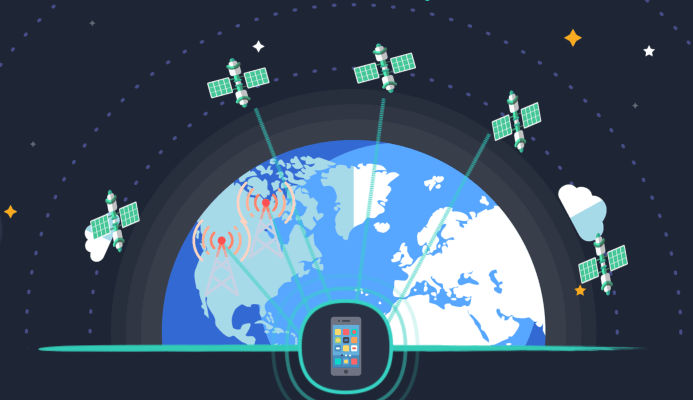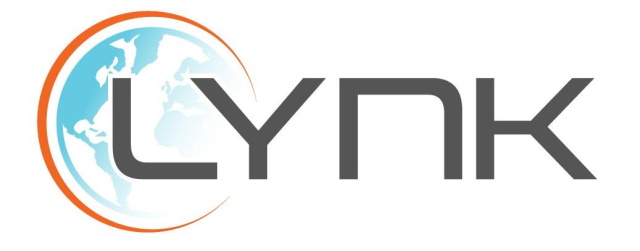Products You May Like
The days of “no signal” may be behind us with the advent of Lynk’s satellite network that lets any modern phone exchange data directly with a satellite overhead, no special antenna or chip required. The company just demonstrated a two-way data link this week and announced its first network partners in Africa and the Bahamas — if everything goes well it may not be long before you can get a signal anywhere in the world.
Formerly known as Ubiquitilink, Lynk has been working up to this stage for years, with former Nanoracks founder Charles Miller at the helm. They emerged from stealth early in 2019 to explain that they had launched several test satellites to show that their theory that an ordinary phone could connect to a satellite in low Earth orbit. Early tests demonstrated they could counteract the noise, doppler shift, and other factors that prompted some experts to call the task impossible, and in 2020 they sent the first ordinary SMS directly from a satellite to a normal phone.
That in itself would have been a remarkable and useful capability to provide to governments and network providers. In emergencies, such as after natural disasters or during blackouts, ordinary mobile networks can’t be relied on to get important messages to affected regions. Lynk showed that a satellite could hit an entire city with an evacuation or shelter in place message, and indeed that may be one way the tech is used in the future.
But it wasn’t until last week that the company demonstrated a two-way connection between a phone and a satellite (their fifth, “Shannon”), allowing someone on the surface with no special equipment to, if there’s a Lynk satellite overhead, both receive and send data. Not a lot of data, of course — but more than enough for an SMS, a GPS location, a weather report, or the like. (Higher datarates will come later as more of the constellation goes up.)
“We have repeatedly demonstrated the two-way call flow required for a phone to connect to our cell tower in space,” said Miller in a press release. “This two-way call flow involves multiple instances of uplink and downlink signaling, including a device request for channel access, and then the corresponding authentication and location update procedures. To date, we’ve done this with hundreds of phones, and counting, in the UK, the Bahamas, and the US. This has never been proven before with a satellite cell tower and Lynk has done it.”
To say it’s a game changer is something of an understatement. Once Lynk puts a few more satellites in orbit, it could cover a good deal of the planet in signal — a narrow and intermittent signal, to be sure, but that’s way better than nothing if you break your ankle while hiking in the backcountry or want to assure your family you’re okay after a hurricane knocks out power in your city.
“The ability to send a text message, anytime and anywhere is the foundation of all safety. If you can send a message to a friend, family member, or neighbor, that can be life saving,” Miller told me. “You might not even want it, but your wife or husband wants it so they don’t have to worry. People are buying peace of mind.”
The first priority, he said, is to make emergency services available to as many people as possible. A 911 call may not be possible yet, but an SOS message containing basic information and coordinates certainly would be, and this service is something that he wants to make sure is offered at zero or minimal cost, though it’s not entirely up to them. But anything associated with an official emergency service would be free.
Ordinary messaging would work just like you have signal: either you can send live when the satellite is overhead, or you can put it in the outbox or send queue to be sent out when the space-based network bar appears.
The company plans to offer a free demonstration app that can deliver a weather report for your location anywhere in the world, no matter what, and Miller said they’d be happy to work with phone or app makers to integrate it with their OS or service.
Amazingly, access will require almost nothing whatsoever from the consumer. When the satellite is available, it will contact your phone just like any other carrier’s cell towers, since it really is one of those that just happens to be in orbit. Your phone is always aware of the various networks around it other than the one you’re using — there’s a constant interplay in the background as different towers are queried and your signal handed off to one or another, or re-registering on the network for whatever reason. You will have to authorize it one way or another, but there will be an app to help with that, as well as agreements among the networks.
As to that, the company is partnering first with Aliv in the Bahamas and Telecel Centrafrique in the Central African Republic. Miller said they are in talks with networks in dozens of countries, including the US, but these small scale deployments are a first step — and the people there really need it. Rural central Africa and remote islands in the Bahamas may not have much in common, but one thing they do is large areas with spotty signal.
Whatever the carrier decides to charge, Lynk gets a share of that, and Miller said they’re leaving that up to networks to decide: “People will pay a reasonable price per message. If you can charge 5, 10, 20 cents per message at the beginning, we’ll let our partners decide, people will pay for it.” Over time, as the service is more widespread and cheaper for Lynk to provide, the price will (presumably) drop.
Naturally the idea of constant connectivity may clash with the idea many have of privacy. But Miller emphasized that they have no interest in customer data. “You’re our customer, not our product. We’re not interested — it would be very dangerous,” he said. With the significant exception of 911 calls or SOS messages being a tacit request to provide one’s location, he said they’re deliberately building to avoid this kind of conflict.
The company is in talks with dozens of network operators around the world, but regulatory and market questions remain in many places, such as the U.S., where the FCC will need to weigh in. But Miller feels certain they’re on their way to becoming a major part of the global communications infrastructure.
“The smartphone in your pocket is like a superpower, it magnifies your abilities as a human being,” Miller said. “But your superpower is broken when you’re not connected. We solve that problem.”

